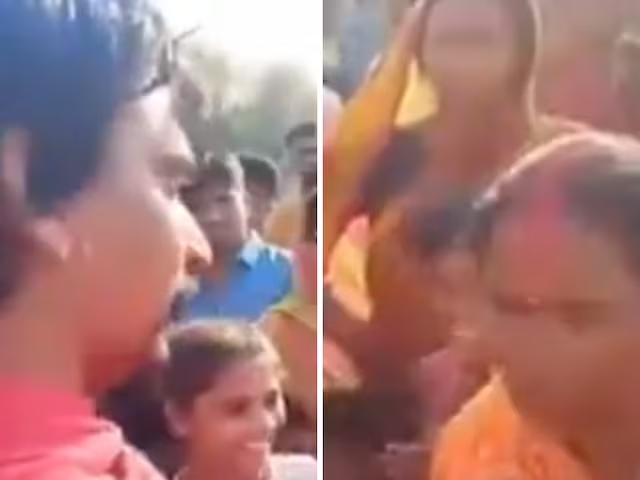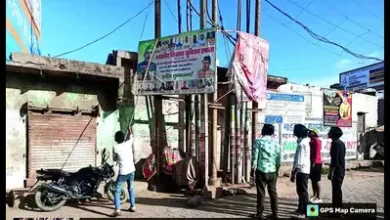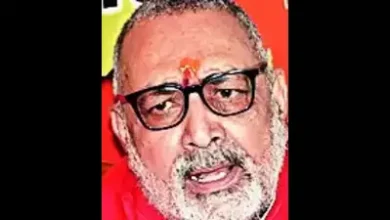One month after it was announced, Nitish Kumar is set to leave the Indian Bloc; part of the agreement with the BJP includes Bharat Ratna for Karpoori Thakur
If recent political happenings in the state are any indication, Bihar Chief Minister Nitish Kumar’s opponents may come to associate his political reliability with the derogatory moniker “Paltu Ram” (turncoat). There has been much conjecture in the political corridors over the last few days over the possibility of the leader of the Janata Dal-United (JD-U) reuniting with the Bharatiya Janata Party (BJP). The likelihood that these rumors are genuine increased on Tuesday when top JD (U) leaders attended many rounds of talks at Nitish’s home, and Bihar state BJP president Samrat Chaudhary was called to Delhi by his party’s leadership.

These advances, however, are not as abrupt as they would seem; rather, they are the result of a month’s worth of maneuvers, with Nitish Kumar applauding Prime Minister Narendra Modi in the wake of the Center’s decision to award the Bharat Ratna to the late socialist leader and former chief minister of Bihar, Karpoori Thakur. Then, without providing any immediate context, Nitish made a jab at dynastic politics, which was seen as a coded allusion to the leadership of the Rashtriya Janata Dal (RJD). This was another narrative twist.
Under the condition of anonymity, a source from the INDIA bloc tells Outlook that the decision to award Thakur the Bharat Ratna might have been a component of an agreement between the JD (U) and the BJP. The agreement also includes two or three other agreements, like the Center granting Bihar’s long-standing demand for special status (along with Jharkhand and Odisha) and holding assembly elections in the state concurrently with the upcoming general elections.
Political observers speculate that shifting political allegiances in the state may have contributed to the abrupt departure of former JD (U) President and MP Rajiv Ranjan Singh, also known as Lalan Singh, at the party’s national executive meeting in Delhi on December 29, 2023. Just a few minutes after Singh’s departure, Nitish was named president. According to reports, the latter was forced to retire because of his close relationship with the RJD.
Sources claim that Nitish’s decision to rejoin the NDA has split the party into two factions: those supporting Lalan Singh are opposed to figures like Ashok Choudhary, Vijay Chaudhary, and Sanjay Jha reuniting with the BJP.
An Account Of Shifting Opinions
Even though there had been rumors about Nitish Kumar possibly switching for a month, the national media didn’t start covering this story until the Bihar chief minister spent hours on January 23 visiting Governor Rajendra Arlekar at the Raj Bhavan. In another blatant indication, the JD (U) has declined an offer to participate in Rahul Gandhi’s Bharat Jodo Nyay Yatra.
Since the 1990s, Nitish has been the target of taunts from RJD Chief Lalu Prasad Yadav, who has often said that it is hard to trust this former enemy turned buddy. Should Nitish split from the RJD and form an alliance with the BJP, this would be his fourth such move in the last ten years.
Because Narendra Modi was selected as the prime minister candidate, the JD(U) leader severed his 17-year relationship with the BJP-led National Democratic Alliance (NDA) in 2013. He and his longtime foe Lalu Prasad contested the assembly elections two years later, and after a resounding win, they established the government. But in April 2017, after just 20 months, he left the RJD and, with the BJP’s assistance, established the government once again. In September 2020, the JD(U) contested and won the assembly elections with the NDA, but Nitish again allied with the RJD in August 2022. It seems like Nitish might be prepared for another transition at this point.
Nitish’s habit of switching allegiances dates even farther back to 1994, when he and George Fernandes founded the Samata Party after splitting from fellow socialist Lalu Prasad and the Janata Dal. He and the BJP established their first coalition in 1996, and it lasted for 17 years, with him ruling Bihar for eight of those years, from 2005 to 2013.
One of the politicians to come out of the socialist politics of the 1970s and 1980s is Nitish Kumar, the chief minister of Bihar and a socialist ally of the right-wing BJP JD (U). He participated in the campaign headed by Jayaprakash Narayan in the 1970s and was subsequently linked to Bihar’s legendary leader Karpoori Thakur, who just received the Bharat Ratna and invented the tiered reservation system.
Nitish became well-known for leading social justice campaigns and for being actively engaged in the push for the adoption of the Mandal Commission Report, which suggested quotas for the other backward classes (OBCs).
Even though Nitish came from socialist and social justice organizations, often claimed to be secular, and relied on Muslim votes, in 1996 he formed an alliance with the Hindu right-wing BJP that lasted until 2013 and was crucial in helping the RJD’s Lalu Prasad Yadav lose Bihar. He oversaw the railroads, agriculture, and transportation sectors in the Vajpayee Ministry. As things stand right now, he is expected to rejoin the BJP.
Additionally, it has been reported that Nitish realized he would never be able to unseat Narendra Modi and that he would not be granted a position in the alliance befitting of his stature after being prevented from doing so by Congress leader Rahul Gandhi and Trinamool Congress (TMC) supremo Mamata Banerjee. According to the reports, Nitish began acting on his realization with the idea that “join him if you can’t beat Modi.” Nitish’s apparent jab at the RJD’s dynasty politics and his evident admiration for Modi after Thakur’s Bharat Ratna announcement have been seen as part of his intended message.
According to recent rumors, Sushil Kumar Modi is anticipated to be Nitish’s deputy chief minister and CM. Nitish is scheduled to take the oath of office. Maybe over the weekend is when the swearing-in will happen.







